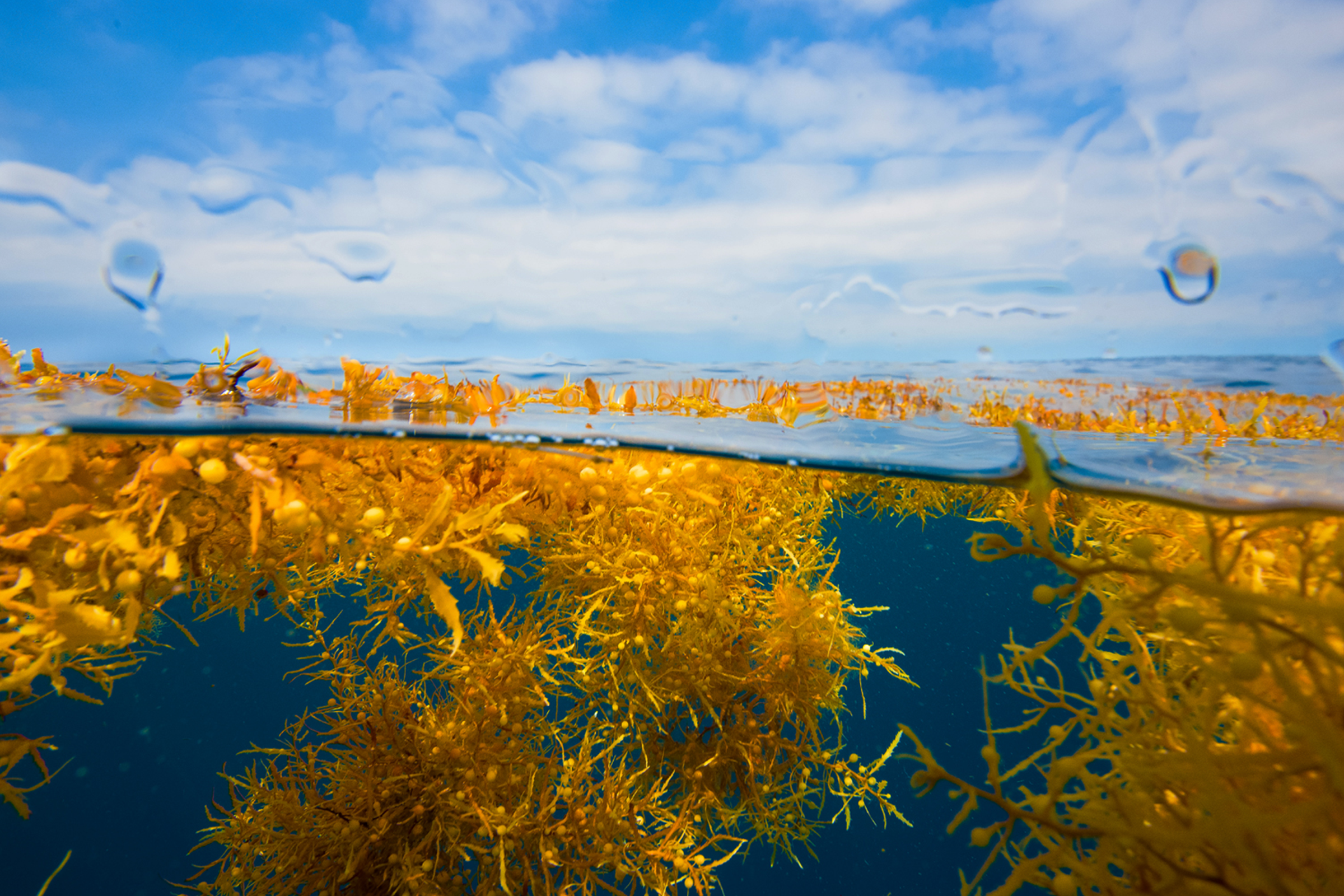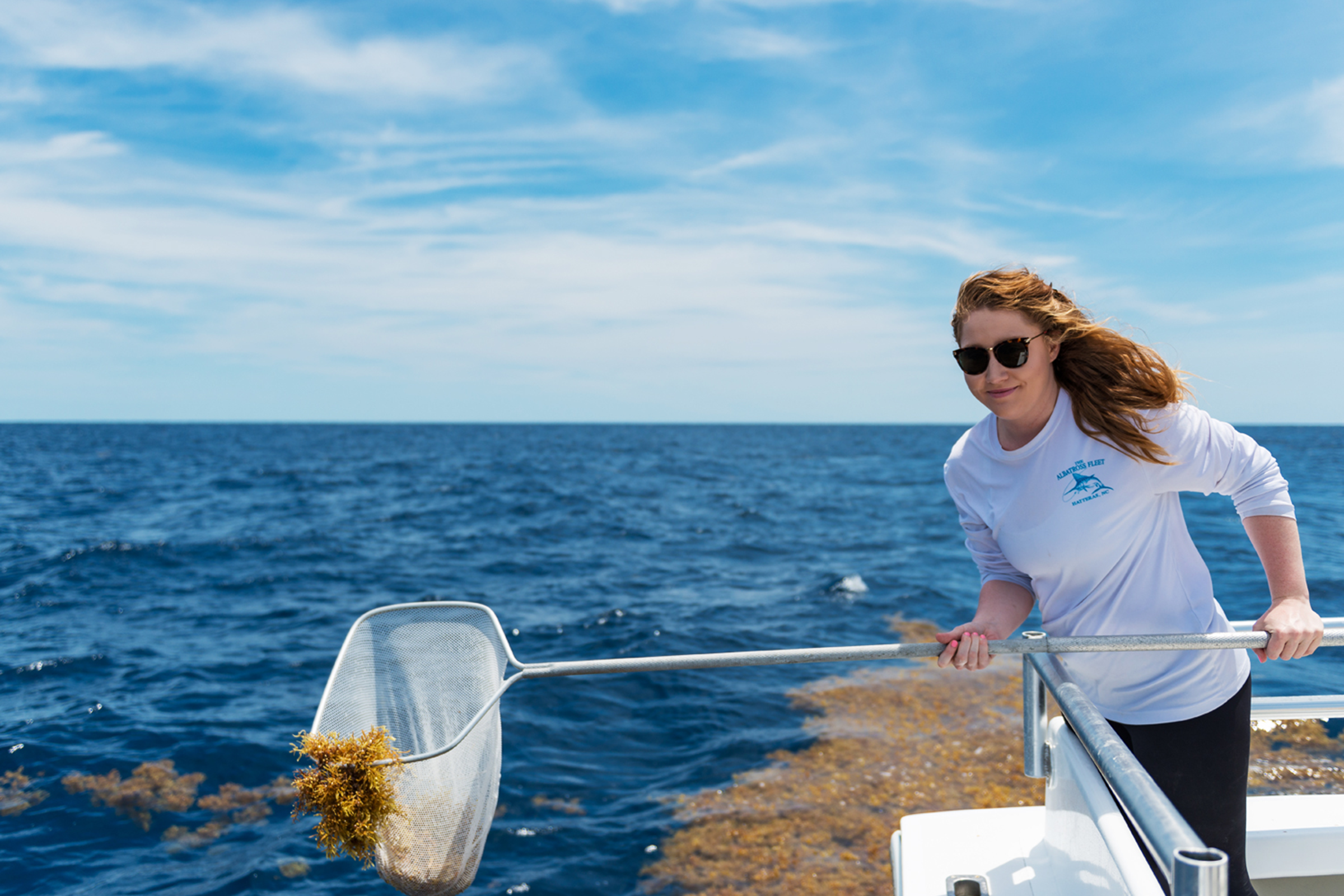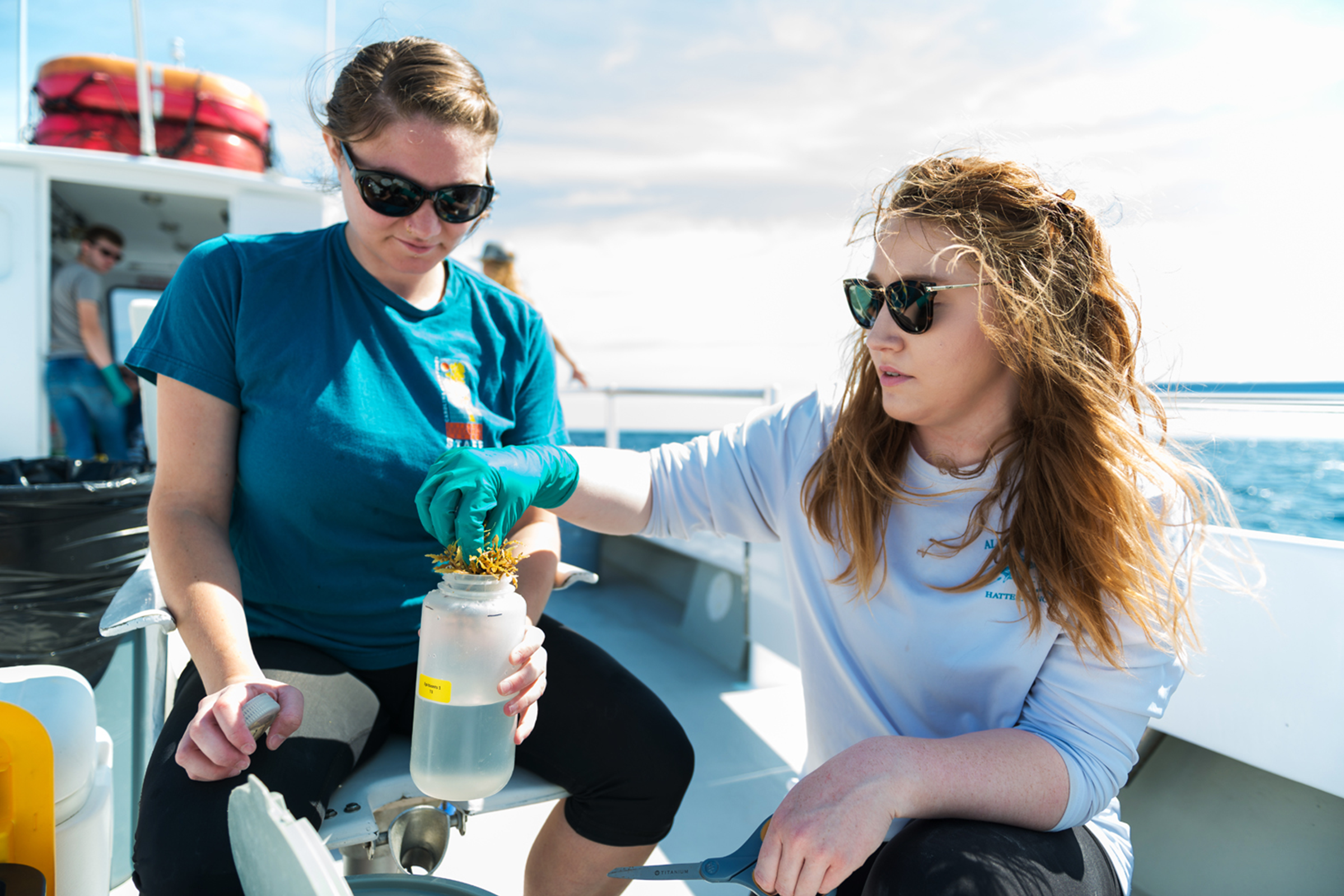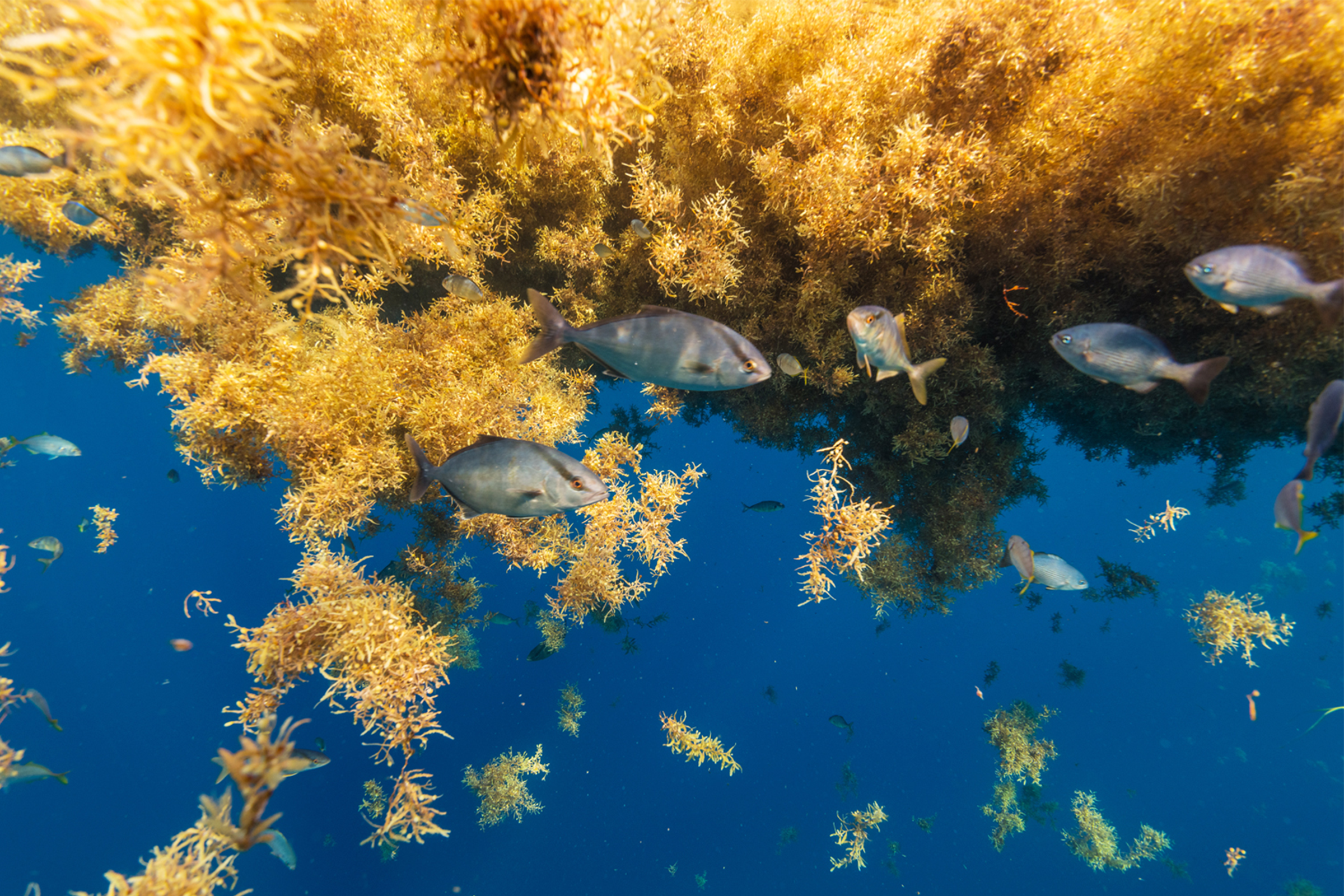Claire Johnson is a doctoral student in the College of Arts and Sciences’ earth, marine and environmental sciences department and a graduate research assistant at the Coastal Studies Institute. In this first-person account, Johnson describes a boat trip to collect sargassum seaweed to study in the lab. The work helps scientists better understand the nitrogen cycle, which is vital to the air we breathe and the food we eat.
My goal is to investigate the biological cycling of nutrients — specifically nitrogen — by the microbial community living on the surface of sargassum and to understand how specific environmental variables alter this process. To study this, we wait for the Gulf Stream to present perfect conditions: high visibility, low wind and calm seas. And then we adventure out into the open ocean to catch the sargassum that floats along its currents.
I set my alarm for 4:15 a.m. so that I can get to the lab in time to fill the sample coolers with ice and strap down the dozens of buckets in the truck bed so that we can get to the dock in Hatteras. By 7 a.m., we’re aboard the Albatross III, embarking on an hours-long journey through the choppy waters of Hatteras Inlet. Depending on the position of the Gulf Stream, it can take us anywhere from one to two hours to reach its western edge and, if we’re lucky, we’ll begin to see sargassum.



